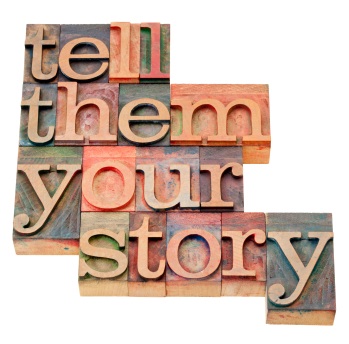4 Steps to Marketing Yourself With a Story
Everyone loves a good story.
 Maybe it’s the little kid hiding deep inside us all, or maybe we just like to be entertained. Whatever the reason, storytelling is a key part of marketing yourself or your organization. Here are four simple steps to help you tell your story in a way that will capture the attention of potential clients and customers.
Maybe it’s the little kid hiding deep inside us all, or maybe we just like to be entertained. Whatever the reason, storytelling is a key part of marketing yourself or your organization. Here are four simple steps to help you tell your story in a way that will capture the attention of potential clients and customers.
1. Find Your Story
Why do you do what you do? This is the kernel of your story. Perhaps you work for a bond financing organization because you love being the person who facilitates new development in growing cities. Or maybe there is no greater joy in your life than watching a child learn something new. Figure out what your passion is, and the rest of the story will flow.
2. Fill In The Gaps.
So you’re a sommelier, lucky you. Your story likely starts with the fact that you love wine, and work as a professional taster. Who do you work for? What types of wine do you specialize in? When did you start? Where do you work?
In journalism these are called the W’s (who, what, when, where, why) and they turn a nugget of an idea into a story. They fill in the critical details that make your audience lean in.
3. Go For The Gut
Any part of your story can be made compelling. You want to embellish the part that best positions you to do the job you want to do. Perhaps you’re a podiatrist specializing in unusual cases of foot trouble. That would be the “what” of your story, and you would want to spend the most effort emphasizing your expertise in that niche market. Or perhaps you became a doctor because you had foot trouble as a kid and you know what a difference good foot care can make. In that case, the “why” of your story is what will draw audiences (potential patients) your way.
When you write up your story (for your website or brochure), start by simply answering all the W questions, then shift things around so the most compelling bit, the bit that emphasizes why people should choose you, is right up front. This will hook the reader into the narrative of your story and keep them interested while you weave the rest in.
4. Close The Deal
The reason to tell you story in the first place is to sell yourself. So don’t pull the final punch.
Say, for instance, your company installs solar power units on homes and Al Gore sits on your board of advisors. That’s something none of your competitors can say. So in your story, start there. Tell potential customers about Al Gore’s involvement (the who), then give the what (solar power installations), the why (save energy and money), and the when (a timeline of the installation process). By the end, you want the reader to be thinking “well, if it’s good enough for Al Gore…”
Or maybe you’re the only organization in Kern County to offer supplemental insurance to firefighters. The “where” of your story is compelling. Start by talking about the need in that particular community, then fill in the details of who, what, and why. Before the reader clicks away from your webpage you want them to think “I have a friend in Kern County, I should forward this on to her.”
Stories Get Passed On
The best thing about stories is that people love to re-tell them. Finding the most compelling way to tell you story will not only ensure that your message is communicated, it will also increase the chances that it gets told again, and again, and again, helping you to more effectively find and engage new clients, customers, or members.


